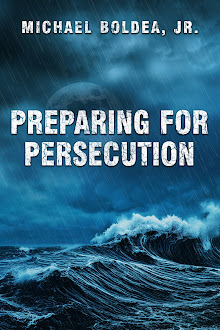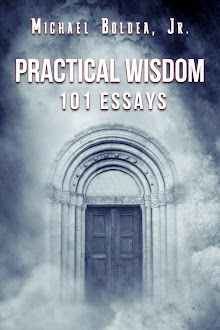Matthew 24:1-3, “Then Jesus went out and departed from the temple, and His disciples came up to show Him the buildings of the temple. And Jesus said to them, “Do you not see all these things? Assuredly, I say to you, not one stone shall be left here upon another that shall not be thrown down. Now as He sat on the Mount of Olives, the disciples came to Him privately, saying, “Tell us when will these things be? And what will be the sign of Your coming, and of the end of the age?”
Solomon, King David’s son, built the first temple, and it was
a wonder not only for its time, but had it stood, it would be a wonder to this
day. No expense was spared in the building of the first temple, with gold being
one of the primary materials used. It was a splendor, and all who laid eyes on
it came to this unanimous consent.
The first temple was destroyed by the Babylonians in 586 B.C.
Seventy years later, it was rebuilt, but not nearly to the grandeur of its
previous iteration. Fortunes had waned since Solomon's time, and they could not
match the splendor and opulence of the first temple.
Sometime before the birth of Jesus and the start of the new
age, Herod the Great, desiring to ingratiate himself with the religious class
and the Jews who inhabited the land in general, made multiple improvements to
the temple, enriching it both by the materials used and erecting new buildings
to expand the temple proper.
This was by no means a small endeavor, and the project
extended beyond Herod the Great's life into the rule of his sons. The work was
still ongoing when Christ’s disciples came to show him the buildings of the
temple. Historically speaking, the entire project was completed sometime during
63 A.D., and the prophecy Jesus spoke regarding not one stone being left upon
the other came to pass seven years after the project’s completion when the
temple was sacked and destroyed by the Romans in 70 A.D.
It doesn’t take much of an imagination to see that the
disciples were proud of the new buildings going up around the temple and the
improvements that had been made to it. They’d gone out of their way to give
Jesus a tour, and the entire scene seems to be undergirded by a sense of
nationalistic pride.
“Look, Lord, in case you missed it, we’ve not been sitting
idle; we’ve been building stuff.”
It says a lot about the disciples in that they took Christ’s
words in stride. They did not try to convince Him He was wrong about the future
of the temple or that it couldn’t possibly be so. They knew who He was, and
when He spoke, it was yes and amen. When men and God don’t see eye to eye, it
is incumbent upon man to change his outlook and not God’s. God knows what He
said because He’s the one who said it. If you disagree, that’s on you.
We can’t downplay how much of a gut punch Christ’s words were
to these men who were essentially showing off all the progress that had been
made in the restoration of the temple and even the new buildings that had gone
up recently. The building wasn’t even done, the paint wasn’t even dry, and here
was Jesus saying it would all amount to rubble. Not one stone would be left
upon another when all was said and done.
On its face, the first few verses of Matthew 24 are a
prophecy about the future fate of the temple whose grounds they were touring,
declaring its destruction even before it was completed. It would be easy to
read these verses, shrug our shoulders, and conclude that Jesus was right and
what He said happened just as He said it would, but there is a deeper truth
contained within this seemingly straightforward text that resonates even with
those of us living in these last days.
Other than the prophecy of the temple’s destruction, the main
takeaway from this exchange is the instability of the physical world in which
we place so much stock. While the godless see building up our spiritual man and
the spiritual world as a whole as ethereal and insubstantial, Jesus flips it on
its ear and insists that it’s the physical world, the material things, the jobs
and the homes, and the security blankets we’ve fashioned for ourselves that are
illusory and deceptive.
That grand edifice we labored to build can turn into so much
rubble faster than we can process what happened. All those plans we made, all
the scenarios we crafted, and all the actions we took to mitigate the effects
of one thing or another can come to naught in the blink of an eye because
everything we do in the physical that we believe will bring us security is a
well-crafted illusion.
There is more substance in building up your most holy faith,
in learning to hear the voice of God, in learning to walk by faith and not by
sight, than in anything you can do with your two hands.
Not only was Jesus foretelling the destruction of the temple,
but He was also teaching His disciples not to trust in anything other than
God's providence. Every construct of man fails eventually. Everything God
establishes remains, though the world might rage and seethe and plot against
it.
In His parable of the sower, Jesus lays out four scenarios:
the seed that fell by the wayside, the seed that fell on stony ground, the seed
that fell among the thorns, and the seed that fell on good ground.
While it would be a fruitful discussion to dissect all four,
especially the seed that fell on stony ground and Christ’s assertion that
although they receive the word with gladness because they have no root in
themselves, they immediately stumble when tribulation and persecution arise for
the word’s sake, I believe it is the seed that fell among the thorns that Jesus
was referencing when warning His disciples not to trust in the arm of the
flesh.
Mark 4:18-19, “Now these are the ones sown among the thorns;
they are the ones who hear the word, and the cares of this world, the
deceitfulness of riches, and the desires for other things entering in choke the
word, and it becomes unfruitful.”
With love in Christ,
Michael Boldea, Jr.















1 comment:
Thank you for this important statement to absorb - There is more substance in building up your most holy faith, in learning to hear the voice of God, in learning to walk by faith and not by sight, than in anything you can do with your two hands.
Post a Comment